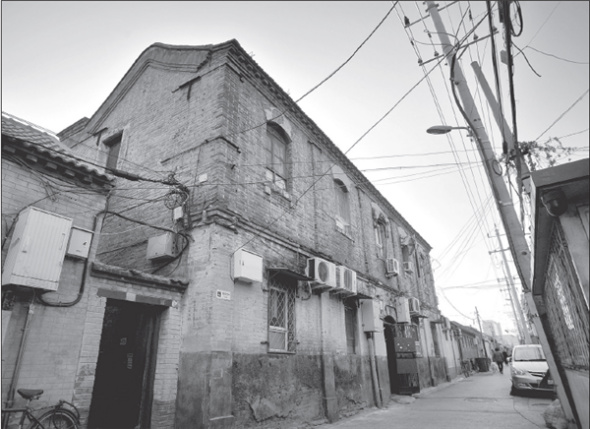
Badahutong, which literally means the eight great hutong, consists of Baishun, Yanzhi, Hanjia, Shaaxixiang, Shitou, Wangguangfuxiejie, Zhujia and Lishamao hutong. They are situated around the bustling Dashila area. (Photo provided to China Daily)
A courtesan of the 1920s and 30s has somehow managed to upstage something you would think it was impossible to upstage: Peking Opera.
By all the rules of name recognition, the Dashilar area of Beijing ought first and foremost to attach itself to Peking Opera, which was first performed there in the first half of the 19th century. Yet when the name Dashilar pops up, more often than the next name to be mentioned is that of the courtesan in question, Sai Jinhua, born at least 20 years after Peking Opera first saw the light of day.
However, when she died in 1936 she left behind a litany of tales about the profound influence she had on China's diplomatic relations with foreign countries in the late Qing Dynasty (1644-1911).
One common theme in these stories is how Sai heroically saved many Beijing residents when foreign forces invaded the city in 1900.
"Whenever Dashilar is mentioned, many people hear stories about Sai Jinhua, but they don't know that it is here that Peking Opera was born," says Wang Qi, Party secretary of the Baishun community in Dashilar.
Dashilar, near Qianmen Street, used to be a honeypot of entertainment for government officials and a bustling commercial hub, Wang says.
"There were many brothels and teahouses in the neighborhood."
In prosperous Qianmen Street, old-style manual tricycles are still alive and thriving, and a few of the peddlers I came across acting as guides were regaling their customers with tales of Sai's mighty deeds, a testament to her historic standing in the area.
However, most of the tricycle itinerary seems to be restricted to the modern, bustling commercial blocks in the northeast of Dashilar, while the house where Sai lived is tucked away in a cluster of hutong in the area's southwest.
It takes about 20 minutes to get to Sai's place from Qianmen Street. The cluster, also known as badahutong, is a far cry from Beijing's modern, glistening image. Years of leapfrogging transformation of the city has failed to touch the area, densely packed with shabby one-story bungalows.


















































